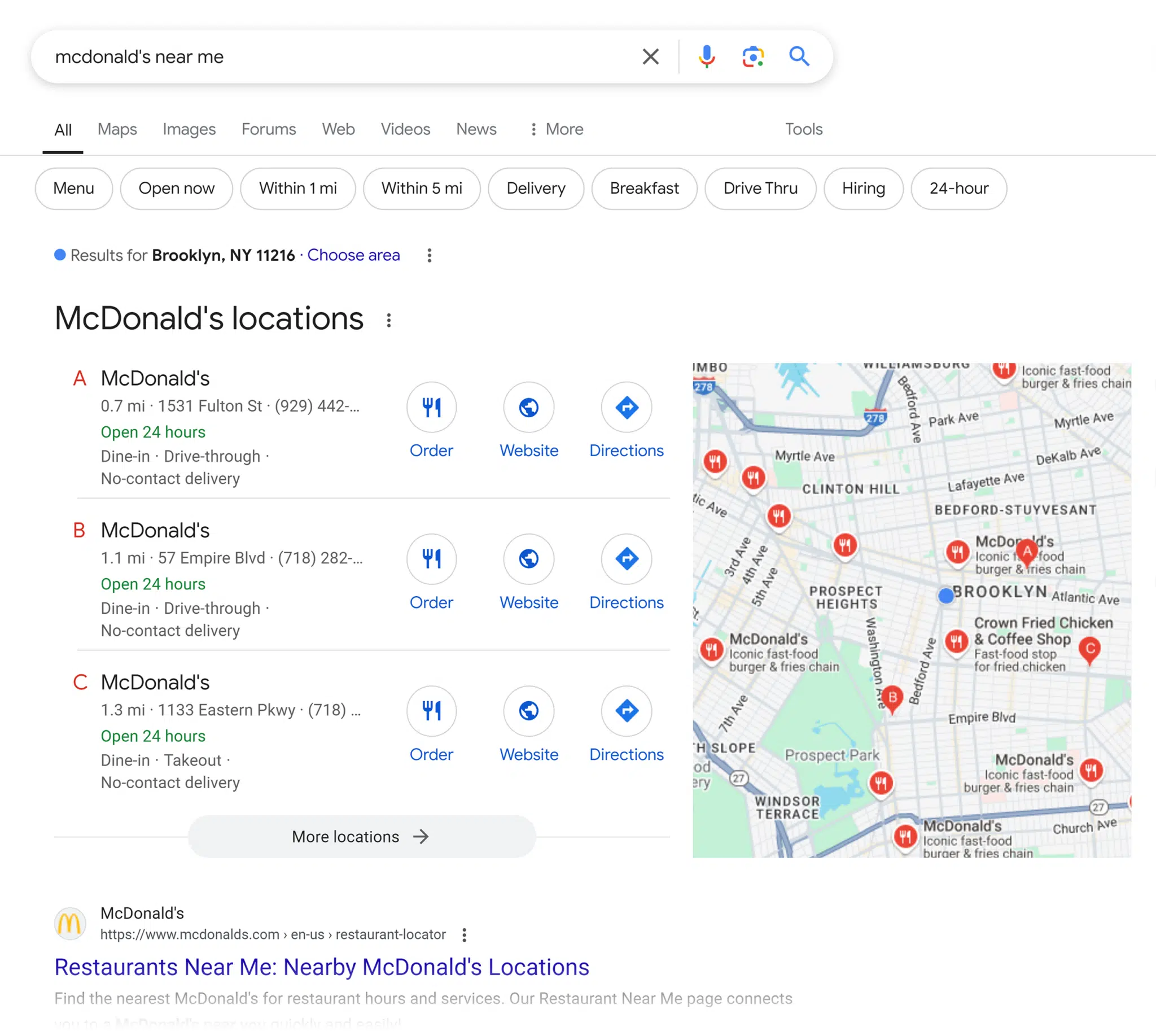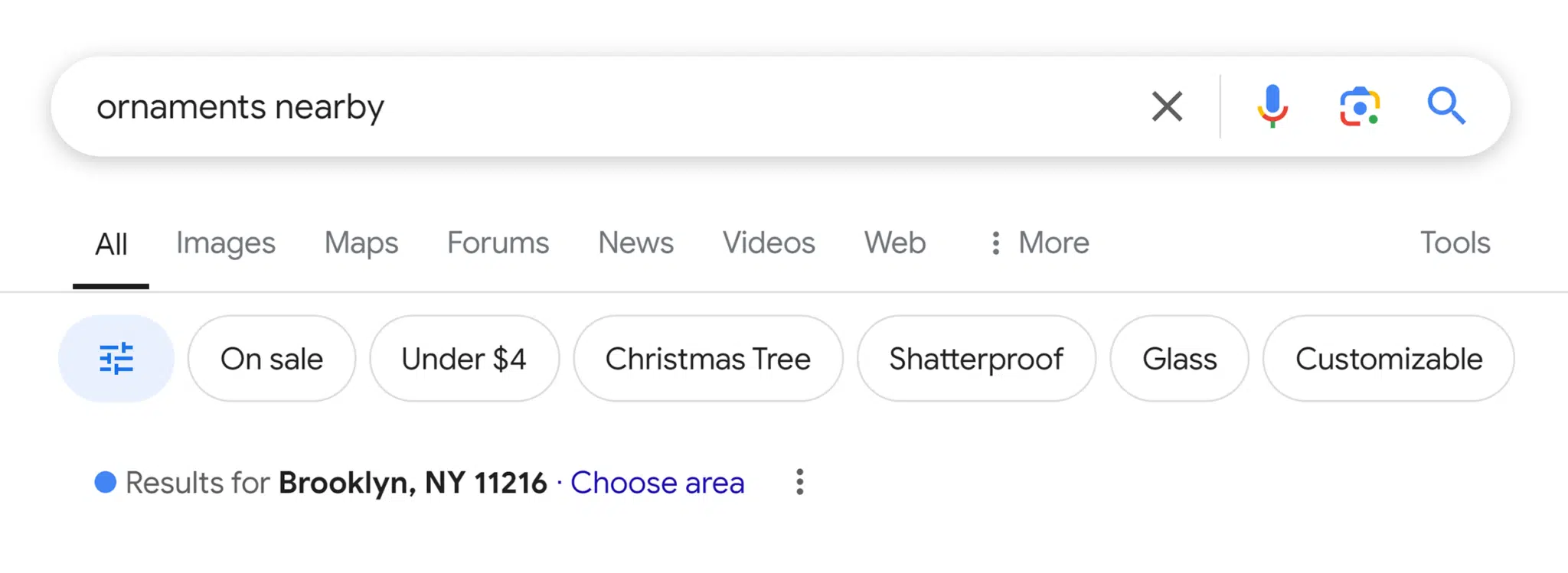Customer experience: how to make enterprise doors authentically different
Last year, Semrush published a terrific roundup of 65 customer retention statistics, two of which really caught my eye in thinking about perennial problems faced in implementing local SEO for large local enterprises: These are substantial statistics which highlight how significant money can be both saved and made by centering customer experiences. There are both […]
Last year, Semrush published a terrific roundup of 65 customer retention statistics, two of which really caught my eye in thinking about perennial problems faced in implementing local SEO for large local enterprises:
- U.S. companies could save over $35 billion per year by focusing on keeping their existing customers happy (CallMiner)
- Some 84% of companies that work to improve customer experience notice an uplift in revenue (Dimension Data)
These are substantial statistics which highlight how significant money can be both saved and made by centering customer experiences.
There are both online and offline blockers on the customer journey in the multi-location enterprise scenario—we’re going to surface and address these today with the goal of making each door of your enterprise authentically localized and different.
The McDonaldization dilemma
For decades, enterprise brands have looked to the work of sociologists like George Ritzer, whose studies of fast food giants like McDonald’s reveal that predictability is a key to scaling success. When customers know that a Big Mac in San Diego is going to be the same as one in Sarasota, it puts them in a comfort zone.

The problem with this model is that it doesn’t accurately relate to the realities of most enterprise brands due to the unpredictability of real-time inventory. You can always get a Big Mac at McDonald’s due to its limited menu of offerings, but a Target customer has no idea whether a jacket they saw while visiting Florida is going to be available at the branch nearest them when they get home to California.

All too often, search engine results aren’t the help they could be for local shoppers. Even when the “nearby” filter (pictured above) is applied to Google’s shopping results, I’ve seen enterprise branches surfaced that are over an hour away from the customer’s location. My confidence that these results accurately reflect real-time inventory is not high.
I’ve experimented with phoning branches in the past and have discovered that, despite a store in the SERPs appearing to stock a product, it’s actually absent from the shelves of the locations nearest me.

There’s the added problem that the current UX of productized Google SERPs is overwhelming. So much information is offered in so many different formats that it’s difficult to know where to look and where to click. That key ingredient prized by fast food restaurant customers of predictability is frequently missing for the patrons of other enterprise models.
Let’s question the predictability narrative
Decades of surveys like this one from ComScore on why consumers choose to shop at small and local businesses have routinely surfaced statistics like this one:
61% shop at local businesses because of their unique product selection.
Pair this with the narrative captured by AmEx that people shop small and local because they value better, more personalized customer service and the predictability narrative starts to come apart. Let’s also add in AmEx’s second finding that local consumers want to feel connected to their communities when they shop.
A different picture emerges: outside the fast food scenario, the predictability factor may have less to do with creating a homogenous experience and more to do with offering a fulfilling one.
Let’s consider a more nuanced list of consumer wants like this one:
- An inventory of products and services that meets both regional and specific personal needs
- A helpful online experience (instead of a confusing one) and caring, well-trained offline support staff
- A brand that contributes to community well-being
A telling tale of two fashion retailers
Where I live in Northern California, my community has long, cold winters, lots of strong coastal winds, and chilly, foggy nights three-fourths of the year.

A small, local clothing boutique knows people here wear heavy coats, warm pants, and sweaters or sweatshirts on all but the hottest days of summer. They keep their storefront windows full of these items for tourists who arrive in town not expecting to freeze while they’re here, and layered attire is simply a must in my community most of the time.
But you’d never know this was true if you walked into most enterprise fashion retailers in my region. They change their inventory to tank tops and shorts while everyone here is wrapped in throws and scarves at night. Their websites are filled with pictures of people in bathing suits on sunny shores, as if we’re all planning to spend the year in Hawaii.
It’s a disconnect locals laugh about, and for the brands involved, it’s a tale of unrealized profit potentials.
Sure, we may want a Big Mac to be the same year-round, but an unlocalized shopping experience simply won’t cut it in most retail verticals.
Enterprise local SEO to the rescue
These three solutions could help the enterprises you market improve localized customer experience and increase local consumer satisfaction.
- Local control of local digital assets
Staff on the ground at each branch of your enterprise should be viewed as community experts. While some scenarios may necessitate that an enterprise keeps all SEO and marketing centralized, authenticity is better served when permission is granted for regionalized staff and franchisees to contribute to the promotion of branches.
Your local SEO and marketing software should ideally support multi-seat access to all digital assets so that local teams are able to connect with the communities they serve.
- Local business listings that act as local guides
Your Google Business Profiles and other major online listings can either help or thwart potential customers on their journeys. The listings of each branch of your enterprise should include the following:
- A guideline-compliant business name that matches what customers see on the street and what they hear when staff answers the phone
- A website link that takes the searcher from the listing to a landing page for the branch they’re considering rather than to a website home page
- Accurate contact information including address and phone, plus the removal of listings for locations that have been closed
- Accurate hours of operation, including holiday hours
- Owner-uploaded photos that showcase interior and exterior premises and amenities such as parking, restrooms, patio dining, ADA access, etc.
- Owner-uploaded videos that give a tour of the premises
- Accurate category selection that best describes the nature of the business
- An incoming stream of recent reviews
- Fast, professional owner responses to all reviews
- Owner-uploaded FAQs via features like Google’s Q&A that answer the most common questions the branch receives
- A business description which has been customized to talk about the highlights of a specific location rather than being a generic description of the brand
- Social media links that point to profiles relating to the specific branch rather than to corporate accounts
The above is just a basic list. Enterprises may wish to explore other features such as Google Updates and Google Merchant Center to fill out their listings more comprehensively.
- Landing pages that are up to heavy lifting
A basic store locator won’t provide the rescue local customers need from the cluttered shopping experience currently available from Google. If a customer makes it from the SERPs to your site, your location landing pages for each branch of your enterprise should feature the following components:
- Reliable, accurate, real-time local inventory specific to the relevant branch
- Where a product is not available at the nearest branch, a call-to-action for the customer to consider going to the next-nearest location where the item is available, with a link to its landing page
- Accurate pricing
- Low-inventory warnings
- Specials, deals, and coupons that are specific to each branch
- Accurate open hours and after-hours support options, including SMS, chatbots, hotlines, and message centers
- Complete, direct contact information for each store (rather than HQ contact info)
- A custom map and accurate driving directions from all major thoroughfares
- Where appropriate, a custom map delineating the service area supported by each branch of the enterprise
- An explanation of all fulfillment options available at a given branch, including BOPIS (buy online, pick up in store), curbside pickup, and home delivery
- An explanation of amenities, including parking, restrooms, ADA access, etc.
- Detailed photography of premises and amenities at each branch
- Video of premises and amenities
- A public-facing staff directory, introducing store managers and other key employees with direct contact methodology for complaint resolution
- A complaint form
- Location-specific review content
- Trust signals, including licensing information, customer guarantees, returns policies, shipping policies, etc.
- Proofs of community involvement, including philanthropy, sponsorships, scholarships, and other forms of participation in local life, specific to each town and city being served
If your current marketing software solution isn’t up to the task of checking off all of these permission and feature boxes, your enterprise may need to consider switching to a better provider.
Offline investments complete the picture
Coloring inside the lines may seem like the safest path when trying to meet the longstanding predictability narrative, but investing in the creativity of local staff could actually prove the more profitable venture. Local employees and franchisees know:
- The character and traditions of their communities
- Local conditions, such as weather, demographics, and trending topics
- Honored institutions, such as local sports teams, community charities and projects, religious organizations, and events that can be supported by the brand
- The hyperlocal competitive market, such as gaps that have been created by other nearby businesses closing
By enabling regional staff to creatively market on the basis of this valuable knowledge, enterprises can become less remote and homogenous.
In order to create a supportive customer experience, these goods must be paired with:
- Adequate staff, so that customers are assisted instead of ignored on the premises
- Well-trained staff, so that customers meet with product and service experts when they arrive at the location
- High-quality, regionalized inventory, so that local needs are well met in each season of the year, instead of overlooked.
The Ace Hardware franchise continues to be my favorite example of a multi-billion dollar operation getting so many things right. Each of their doors is different, with unique localized decor and product, and a staff that lives up to its historic jingle of being the “helpful hardware folks.”
Instead of needing every aspect of Ace to be as predictable as a fast food drive-thru, people cherish that the Ace they grew up with had a vintage car parked outside, or a display of old-fashioned penny candy in the window, or gave away free cider at the holidays.
Creativity can be messy, and risk averse-brands may fear it, but if our marketing mantras make us forget that businesses are made up of people serving people, the real risk is losing the chance to make a lasting connection with our customers.
A bold combination of helpful digital assets and localized offline experiences should be explored for its potential to differentiate not just the doors of a brand, but its whole operations. These are the experiences your customers will remember, review, recommend, and reward.
Dig into data insights on local SEO for your site
Take the guesswork out of local search today! Manage your locations from one central hub and get regular updates on local performance with Semrush’s Local Dashboard.